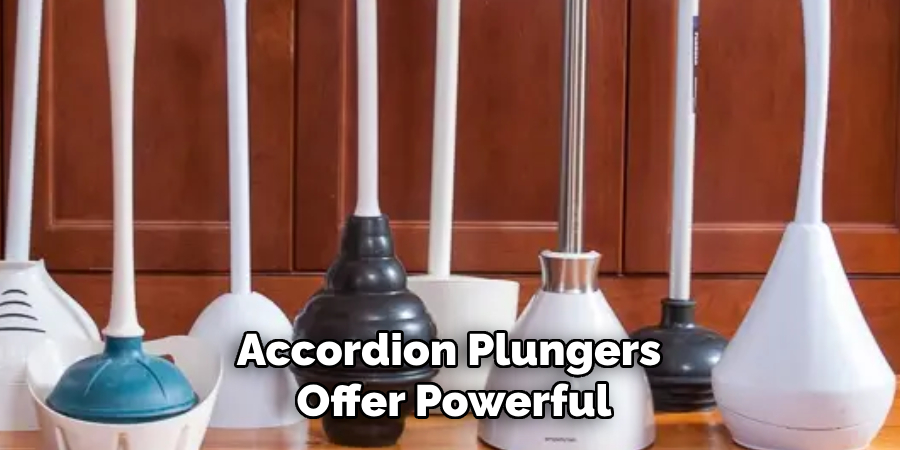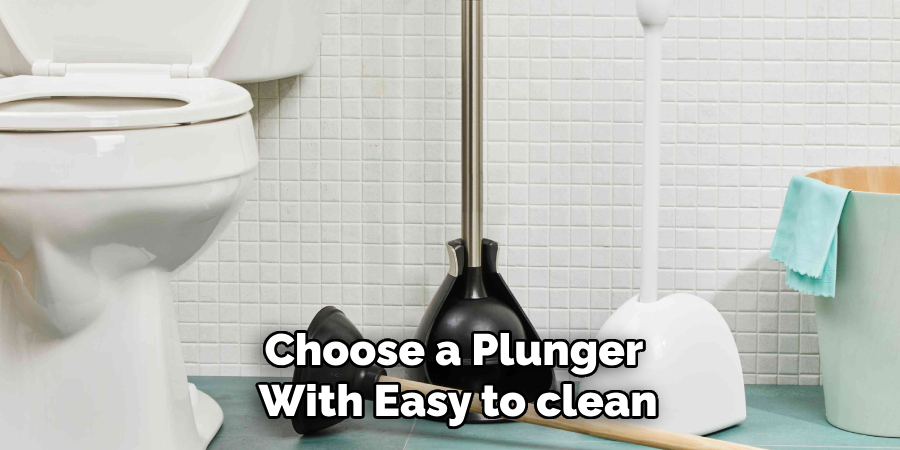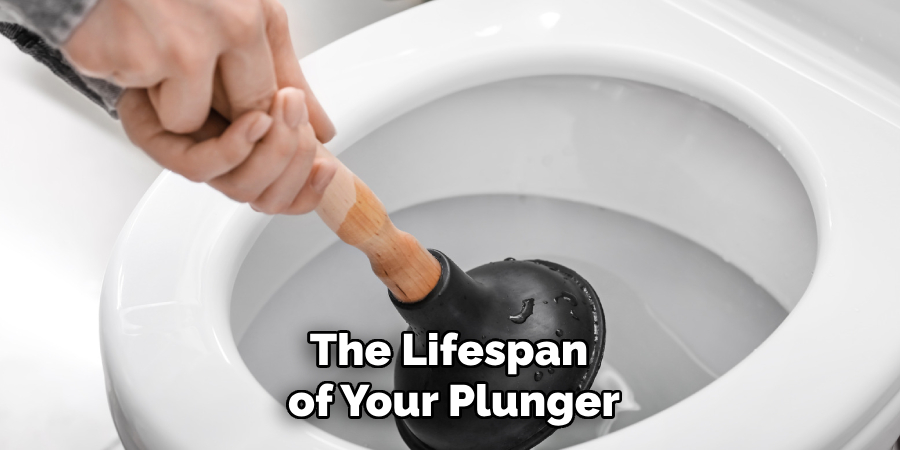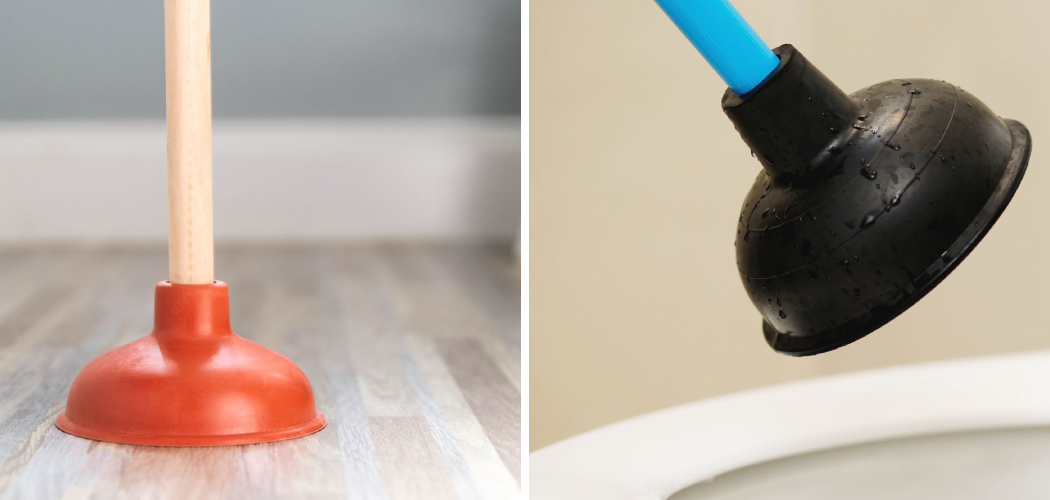Choosing the right plunger might seem like a straightforward task, but with various designs and uses, it’s important to match the tool to the specific job. Whether you’re dealing with a clogged sink, shower drain, or toilet, having the appropriate plunger can make all the difference. This guide will help you understand how to choose the right plunger for your needs.

Importance of Owning the Right Plunger
Owning the right plunger is essential for effectively tackling clogs and maintaining your plumbing system. Using the wrong type of plunger can not only make the job more difficult but also risk damaging your fixtures. For instance, a sink or flat-surface plunger won’t create the proper seal needed for a toilet, leading to frustration and wasted effort. The right plunger ensures you can resolve clogs quickly, preventing potential water damage and costly repairs.
It’s a simple yet crucial tool that provides convenience, efficiency, and peace of mind when unexpected plumbing issues arise.
Scenarios Requiring Different Types of Plungers
Different clogs call for different types of plungers to ensure effective results. For toilets, a flange plunger is the ideal choice. This plunger features an extended rubber flange on the bottom, which is designed to fit into the toilet drain, creating a strong and effective seal for clearing blockages. For sinks, showers, or bathtubs, a cup plunger works best. Its flat-bottomed design is perfect for creating suction on flat surfaces, making it ideal for these types of drains.
Lastly, accordion plungers can be used for more stubborn toilet clogs due to their design, which generates greater force. By understanding the right plunger for each scenario, you can tackle clogs more efficiently and avoid unnecessary frustration.
10 Methods How to Choose the Right Plunger for Your Needs
1. Understand the Types of Plungers
Knowing the different types of plungers is the first step in making an informed choice. The three main types are cup plungers, flange plungers, and accordion plungers. Cup plungers are the standard design with a flat rubber cup and are best suited for sinks, bathtubs, and other flat surfaces. Flange plungers are designed for toilets, with an extended lip that forms a tight seal in the toilet bowl.
Accordion plungers offer powerful suction and are ideal for tough clogs. Each type serves a specific purpose, so understanding their uses ensures you choose the one that fits your needs.

2. Match the Plunger to the Drain Type
Different drains require different plungers for effective clog removal. A sink or bathtub drain works best with a cup plunger because it creates a flat seal on these surfaces. Toilet clogs demand a flange plunger, as its extended design fits snugly into the curved toilet drain. Using the wrong type of plunger can be inefficient and may even worsen the clog. Identifying the type of drain you’ll be working with helps narrow down your options.
3. Consider the Size of the Plunger
Plunger size matters more than you might think. A plunger that’s too small won’t create enough suction, while one that’s too large may not fit properly in the drain. For sinks, a small to medium-sized cup plunger works well. For toilets, a larger flange plunger provides better coverage and more effective plunging. Measuring your drain openings before purchasing ensures the plunger fits snugly and works efficiently.
4. Examine the Material Quality
The quality of the materials used in the plunger directly affects its durability and performance. High-quality rubber cups provide a better seal and are less likely to crack or degrade over time. The handle should be sturdy and made from durable materials like stainless steel or hard plastic. A poorly made plunger might fail when you need it most, so investing in a durable option ensures long-term reliability.
5. Check the Handle Design for Comfort
Plunging can require significant force, and a poorly designed handle can make the task uncomfortable. Look for ergonomic handles with a comfortable grip to reduce strain on your hands. Handles with non-slip coatings or ridges provide better control, especially when dealing with stubborn clogs. Some modern plungers even feature padded handles for added comfort. A well-designed handle makes the plunging process smoother and less taxing.
6. Evaluate Suction Power
The primary function of a plunger is to create suction, so it’s crucial to assess its ability to do so effectively. Accordion plungers are known for their strong suction power, making them a good choice for severe clogs. Cup plungers offer moderate suction, suitable for lighter tasks. Testing the plunger or reading user reviews can provide insights into its performance. Strong suction power means fewer plunging attempts and quicker results.
7. Prioritize Hygiene Features
Since plungers are used to clear waste-filled drains, hygiene is a critical factor to consider. Some plungers come with antimicrobial coatings to reduce bacteria growth, while others feature splash guards to minimize mess during use. Choose a plunger with easy-to-clean surfaces to ensure it remains sanitary after each use. Prioritizing hygiene not only protects your health but also makes the cleanup process less unpleasant.

8. Look for Storage Solutions
Storage can be a challenge, especially if you’re trying to keep the plunger out of sight yet accessible. Some plungers come with their own storage caddies or holders, keeping them upright and preventing water from pooling. Wall-mounted designs are also available, which save floor space and keep the plunger within reach. Considering storage options helps maintain a tidy and organized bathroom.
9. Consider Multipurpose Plungers
If you want a versatile tool, consider a multipurpose plunger. These designs often feature a detachable flange, allowing them to work effectively on both flat surfaces and toilet drains. While slightly more expensive, multipurpose plungers save space and eliminate the need to purchase multiple tools. They’re particularly useful in households with diverse plumbing systems.
10. Factor in Your Budget
Plungers come in a wide price range, from basic models to high-end designs with advanced features. While it’s tempting to opt for the cheapest option, investing in a well-made plunger ensures better performance and durability. Consider your budget but don’t compromise on quality. A reliable plunger is a worthwhile investment that can save you time, effort, and costly plumbing repairs.
Maintenance and Upkeep
Proper maintenance and upkeep of your plunger can extend its lifespan and ensure it remains effective when you need it most. After each use, make it a habit to clean the plunger thoroughly with hot water and a disinfectant to remove any bacteria or residue. Allow it to dry completely before storing to prevent mold or mildew growth. Check the rubber cup and handle regularly for signs of wear and tear, such as cracks or deterioration, and replace the plunger if it’s no longer creating a proper seal.
For added hygiene, consider storing the plunger in a designated holder or caddy that keeps it upright and off the floor. Taking these simple steps ensures your plunger remains a reliable tool and minimizes unpleasant odors or contamination.

Tips for Achieving the Best Results with Your Plunger
- Use Proper Technique
To maximize the efficiency of your plunger, ensure that you are using the correct technique. Start by creating a tight seal between the plunger and the drain opening. For cup plungers, ensure the rubber cup fully covers the drain. For flange or accordion plungers, insert the flange into the toilet drain before plunging. Use steady, firm strokes to build and release pressure, making sure to maintain the seal throughout the process.
- Add Water if Necessary
Plunging works best when the plunger is submerged in water, as this helps create stronger suction. If there’s not enough water in the sink, tub, or toilet, add water until the plunger is fully covered. This ensures better pressure flow, making it easier to dislodge clogs.
- Avoid Over-Plunging
Excessive plunging can sometimes cause damage to pipes or worsen clogs by compacting debris. If the clog does not clear within a reasonable number of attempts, consider using an alternative method or consulting a professional plumber. Over-plunging may also splash dirty water, creating unnecessary mess.
- Clean the Plunger After Use
After successfully clearing a clog, always clean your plunger thoroughly to maintain hygiene. Use a disinfectant or bleach solution to sanitize the rubber and handle, and rinse it well. Allow the plunger to dry completely before storing it to prevent bacterial buildup.
- Regular Maintenance
Routine maintenance of your plumbing system can reduce the need for plunging. Avoid flushing non-flushable items, trap hair in sinks and tubs using strainers, and run hot water down your drains periodically to clear grease or buildup. Taking preventative measures keeps your drains clear and prolongs the lifespan of your plunger.
By following these tips, you can achieve the best results when using your plunger while ensuring effective and hygienic use.

Conclusion
Choosing the right plunger is about more than just picking the first one you see. By understanding the types of plungers, matching them to your specific drain needs, and considering factors like size, material quality, and suction power, you can select a tool that works efficiently and lasts for years. With these methods in mind, you’ll be well-equipped to tackle any clog with confidence and ease.

